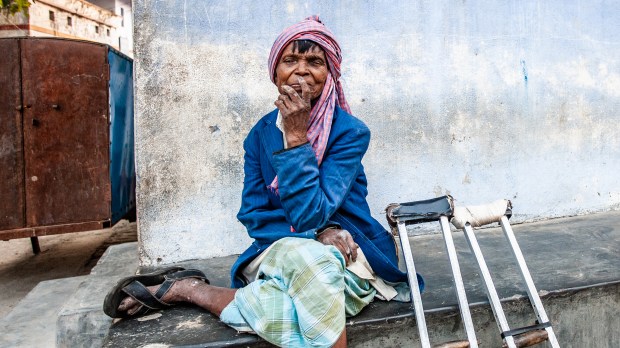Though many think of leprosy as a disease from biblical times, it also exists today, despite all of modern medicine’s advancements. In fact, the World Health Organization (WHO) reported that the year 2019 saw more than 200,000 new leprosy cases. And between 3 and 4 million people worldwide are living with deformities or other serious impairments due to leprosy.
Catholic organizations serving the afflicted
Fortunately, there are Catholic-affiliated organizations that continue to serve the afflicted. Among them is the UK-based St. Francis Leprosy Guild (SFLG), which has existed for 125 years and currently operates in 14 countries – 7 of them in Africa, 6 of them in Asia, and also Brazil, which currently sees the world’s second-highest number of persons diagnosed with leprosy (India has the world’s highest number).
The SFLG aims to detect at-risk persons as soon as possible and start a treatment regimen (which typically involves a combination of antibiotics). The disease can be cured if patients complete a course of treatment (usually lasting between a year or two). However, if the afflicted person cannot obtain treatment soon enough, the damage is typically permanent.
What we know about leprosy
Despite the terror which this disease continues to evoke, modern leprosy (known also as “Hansen’s disease”) is not especially contagious. In fact, the majority of human beings are naturally immune.
The medical community is still uncertain about the exact nature of the disease’s transmission. However, it seems that prolonged and close contact with infected persons can increase one’s own chance of infection. Also, there seems to be a correlation between infection and such factors as malnutrition, inadequate sanitation, and compromised immune systems. Thus, leprosy tends to infect persons living in poverty.
Though facial disfigurement is the most notorious symptom, untreated leprosy can cause blindness as well as the clawing and crippling of hands and feet, along with various infections and ulcers. Indeed, early diagnosis and treatment can protect against these issues. Unfortunately, however, in much of the world, people are without access to such resources.
The Marie Adelaide Leprosy Centre
Seeking to fill this treatment void is the Marie Adelaide Leprosy Centre (MALC) in Pakistan. Established in 1956, this organization’s leading figure was Sr. Ruth Pfau (1929–2017), a German nun and medical doctor known as “Pakistan’s Mother Teresa,” who spent more than 55 years combating leprosy in Pakistan.
Currently, more than 800 people (including Muslims and Hindus, along with Christians) work on behalf of MALC. About 30% are employees and the rest consist of government workers and volunteers. “Any success we have achieved is due to our team effort,” says Savio Pereira, Director of Human Resources and a native of Karachi, Pakistan.
Seeking to contain tuberculosis as well as leprosy, MALC is involved with more than 150 health centers. Among these venues is a 70-bed hospital in Karachi that receives patients from across the country. “Persons affected by leprosy are temporarily admitted to the wards for their ulcer treatment and discharged accordingly,” says Pereira. The organization also has a home in Karachi that provides shelter for 48 disabled persons.
MALC covers its operating costs with the support of local and international donor agencies, along with individual philanthropists.
Treating leprosy in Zimbabwe
Cases of leprosy worldwide have fallen in recent decades, but the disease is nowhere near eradicated. As Pereira points out, reasons for the continuation of leprosy in many countries include socioeconomic conditions such as living in overcrowded settlements, along with genetic susceptibility, and a very long incubation period (5 years on average, but symptoms can take 20 years or more to manifest).
“Leprosy has been on a slow but sustained decline in Pakistan,” says Pereira, who adds that the country now detects about 300 to 400 new cases annually.
Incidence of the disease has also declined in the sub-Saharan nation of Zimbabwe, home of the Mutemwa Leprosy Care Centre (MLCCC). Established in the 1930s, this venue provides shelter, medicine, and various other forms of support to those with leprosy. Among its workers was the Catholic convert and pilgrim John Bradburne, now a Servant of God, who served persons with leprosy during large-scale political upheaval and danger, as the territory transitioned from the British colony of Rhodesia to the independent nation of Zimbabwe. He met with a violent martyrdom in 1979.
These days, the Centre is run by Fr. Linous Mkumbuzi, OFM. Though the MLCCC accepts donations, its residents also work to support themselves, largely through raising animals and cultivating vegetables. Such self-sufficiency can be very elusive for people with a condition that is often as disabling and stigmatizing as it was millennia ago.

